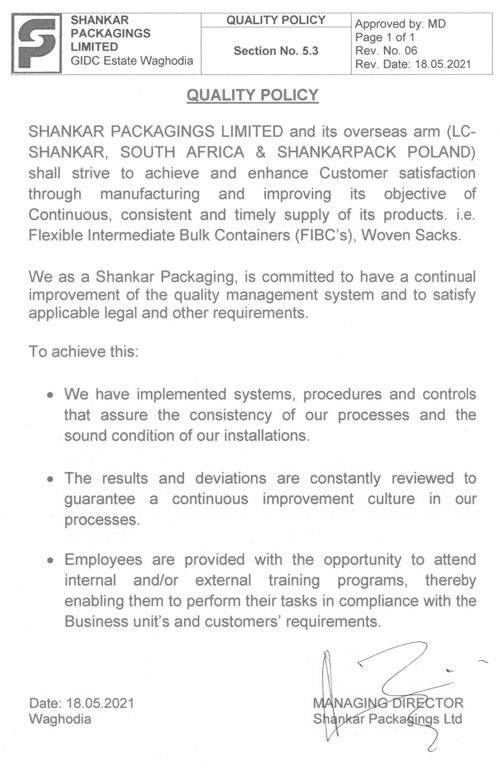

The Quality Assurance System at SPL is a scientific and systemic one based on the twin principles of online inspection and trend analysis. At SPL we do not compromise on quality, we walk an extra mile to sustain the quality.
The online inspection is designed to identify and eliminate possible deviations at the time and point where they occur. The trend analysis is to highlight long-term trends of all required attributes in order to focus efforts on improvement. The most significant attribute of these FIBCs is that every FIBC can be traced back right up to the order number as well as production date and Quality Inspector.
All potential areas of operations where deviations are likely to occur or possibility of occurrence are identified. If such inspection generates values outside the acceptable range, it triggers off a standard procedure to eliminate the deviation and segregate such production for a more careful inspection.
Simultaneously, the recordings of inspections made are computerized to create a data base. This data is then put to statistical analysis to measure long term trends which are periodically analyzed to focus efforts at product improvement.
The Quality Assurance Department is manned by experienced personnel vested with adequate authority (which includes stoppage of production) for effective functioning. This department reports directly to the top executive management independent of production department.